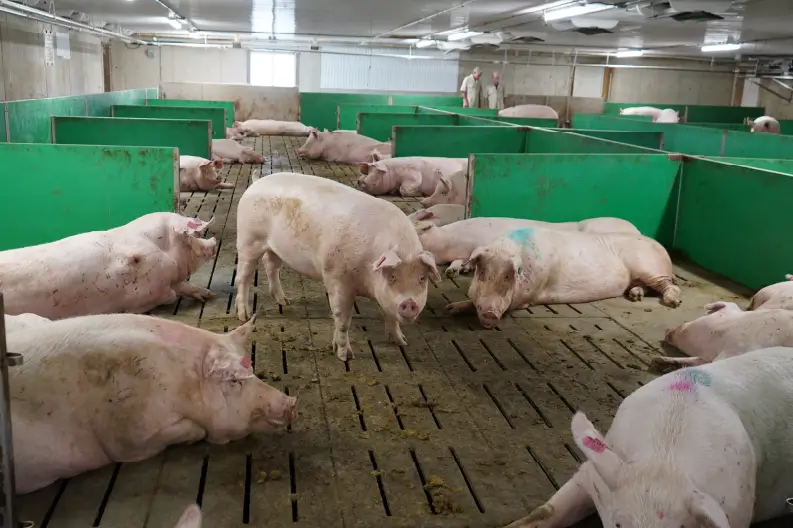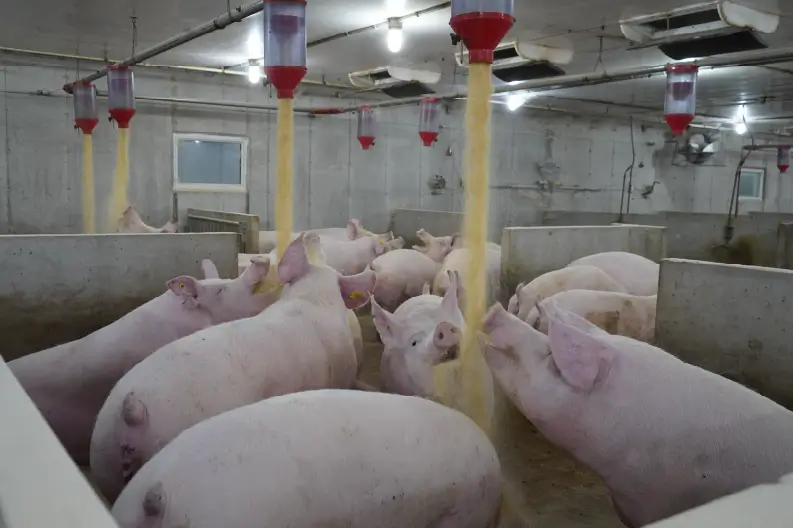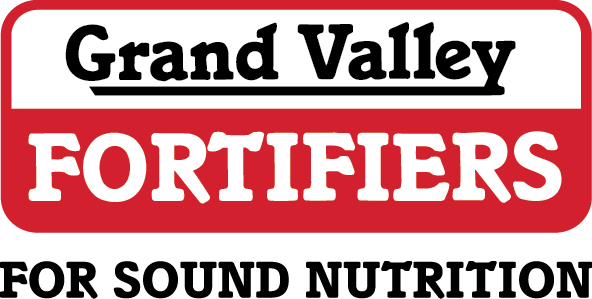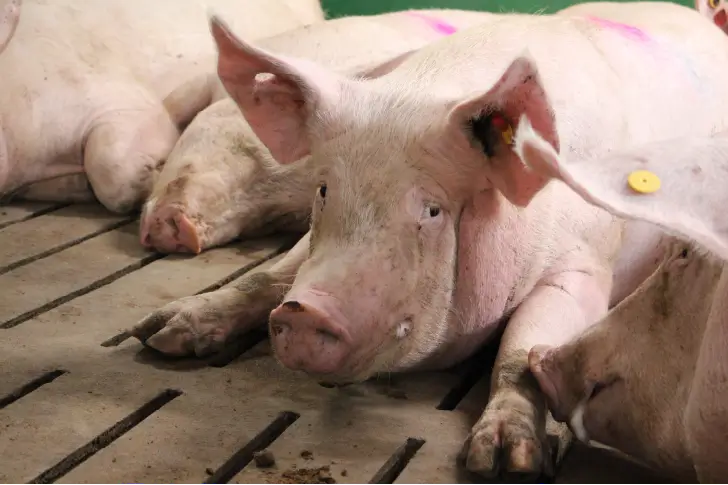Monogastric Nutritionist
Grand Valley Fortifiers
Compared to other animals, pigs are naturally more prone to heat stress. They lack functional sweat glands and have relatively small lungs compared to their body size, which makes it challenging for them to release heat by panting. Additionally, modern pigs are more prone to heat stress than animals from decades ago, as they are leaner and more productive, which generates more body heat. When the temperature rises above the sow’s upper critical temperature (24 -25°C), they are unable to or have more difficulty maintaining their homeostatic body temperature, and we call this “heat stress”.
With the change in climate and increasing temperatures around the world, the concern of heat stress is no longer limited to specific regions. It has been estimated by Dr. Pollmann that the impact of heat stress on the American swine industry amounts to approximately $900 million per year, with half of the losses attributed to the breeding herd (Pollmann, 2010).
Sows are particularly vulnerable to heat stress and a major consequence of heat stress is reduced feed intake, which is detrimental during a time of high nutritional demands. To release excess heat, blood flow is redistributed towards the periphery of the sow’s body. Unfortunately, this reduces blood flow to other organs including the gastrointestinal tract (GIT), leading to inflammation, oxidative stress, and damaged tissues-commonly referred to as “leaky gut”. Consequently, impaired feed digestibility in sows can result in a negative energy balance, poor body condition, and reduced milk yield during lactation. Respiratory alkalosis is another issue faced by heat stressed sows. Excessive panting causes excessive CO2 loss and imbalance of various biochemical and physiological functions in the sow’s body. Furthermore, heat stress can compromise reproductive efficiency. Sows exposed to high temperatures have smaller and slower follicular growth after weaning. This results in an increased number of sows showing anestrus and silent estrus, ovulation failure, and longer weaning to estrus intervals.
Given all the above, we can conclude that managing heat stress is critical in sows. Addressing heat stress requires a comprehensive approach that incorporates both nutritional interventions and management of environmental factors within swine facilities.
Strategies to alleviate heat stress

Environmental Strategies to consider:
01. Improved ventilation management
02. Drip/sprinkler cooling
03. In-floor cooling
04. Reducing the pen density
05. Adjusting the temperature of the heat pads or the heat lamps for the piglets in the farrowing room
However, these environmental changes may not be applicable at certain facilities and/or may require more time and investment to implement.

Nutritional Strategies:
01. Water quality and supply is necessary year-round, as it plays a critical role in various metabolic functions. During the summer months, water requirements increase, necessitating more frequent checks of water lines to ensure a clean and sufficient supply. Additionally, maintaining appropriate drinker heights for easier access is essential. We also recommend ensuring the correct amount of drinkers for the stocking density of each pen. If you’re unsure of your water quality or want to improve it, we suggest consulting with a water expert from Farmers Depot.
02. Depending on the feeding system, if the time of feeding can be changed to a cooler time of the day (e.g. early morning and late evening) it could improve feed intake. However, if this is not possible, other nutritional strategies should be considered.
03. Feeding a diet formulated to have a low thermic effect can help reduce the heat generated from feed consumption. This can be accomplished by increasing the use of fat sources and reducing the protein and/or fiber content of the diet. Among energy sources, fat has the highest digestibility and generates the least amount of internal heat when metabolized.
04. While dietary fiber is essential for maintaining a healthy gut, improving satiation in dry sows, and reducing constipation around farrowing, it’s crucial to consider the heat generated from fiber fermentation in the hindgut. Therefore, fiber inclusion should be carefully evaluated to balance its benefits and drawbacks in a heat stress situation.
05. Electrolyte supplementation can help maintain proper hydration and electrolyte balance as they are essential for regulating cellular functions and fluid balance. Common electrolytes include sodium, potassium, and chloride and these can be supplied through either feed or water.
06. Supplementing extra levels of feed additives like zinc and antioxidants (e.g., Vitamin E and selenium) have been shown to protect intestinal barrier integrity during heat stress.
07. Fatty acids, especially n-3 and n-6, can positively impact follicle development and ovulation. Omega-3 fatty acids possess antiinflammatory properties and can help mitigate the inflammatory response associated with heat stress when supplemented.
It is crucial to recognize the signs of heat stress on sows and explore mitigation options that are feasible on your farm. Utilizing the options stated previously can help reduce the negative impacts of heat stress on sows which will allow your sows to remain healthy and productive year-round. We recommend you speak with your Nutritionist or Swine Specialist today to plan the best mitigation strategy for your hog operation this summer.
References: Pollmann, D. S. 2010. Seasonal effects of sow herds: industry experience and management strategies. Midwest ASAS Billy N. Day Symposium.
This article was written for the Summer 2024 Swine Grist. To read the whole Swine Grist, click the button below.

